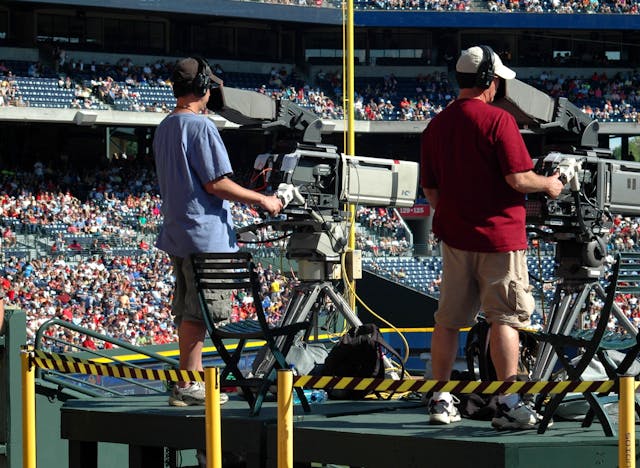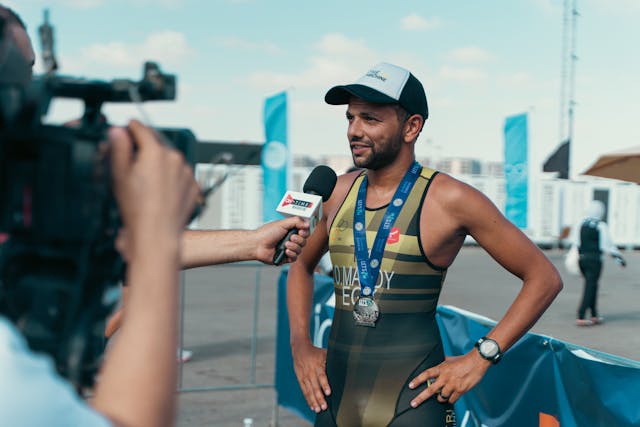Sports Broadcasting: Behind the Scenes of Live Sports Coverage
Sports broadcasting is a multi-faceted industry that brings live sporting events directly to viewers, creating an exhilarating experience whether at home, in bars, or at other viewing parties. But have you ever wondered what happens behind the scenes to ensure that a football game, basketball match, or tennis final reaches millions of viewers in real-time? From technical aspects to storytelling, the world of sports broadcasting is vast and dynamic. Let’s take a closer look at how live sports coverage comes together and the key players that make it happen.

The Anatomy of a Live Sports Broadcast
A live sports broadcast involves a lot more than just pointing cameras at the game. It’s a carefully orchestrated production that combines technology, teamwork, and creativity. Here’s a breakdown of how it all comes together:
Pre-Production: Planning the Broadcast
Before the event even takes place, a team of producers, directors, and camera operators come together to plan out the logistics of the broadcast. They decide the camera angles, how many cameras will be used, and what kind of graphics or statistics will enhance the coverage.
-
Camera Setup: A typical sports broadcast might have anywhere from 5 to 30 cameras positioned in various places around the venue. Key positions include overhead cameras, sideline cameras, and even "action cams" that capture close-ups of the players in motion.
-
Graphics and Stats: Producers work with graphic designers to create on-screen visuals like scoreboards, player statistics, and replays. These are essential to helping viewers understand the action as it unfolds.
-
Scheduling and Timing: Broadcasting live sports is all about timing. Producers plan how to cut to replays, provide commentary, and switch between live shots and highlights. Precision is key to maintaining the flow of the broadcast.
The Crew: On-Site Personnel
Sports broadcasting teams consist of various professionals working in unison, each with a crucial role to play:
-
Director: The director is in charge of guiding the overall production. They communicate with camera operators, audio technicians, and graphics teams to ensure the broadcast flows smoothly. The director has a "big picture" view of how everything will come together.
-
Camera Operators: These professionals are responsible for capturing the action. Depending on the sport, they may need to follow the ball, zoom in on key moments, or capture crowd reactions. For fast-paced sports like soccer or basketball, camera operators need to be highly skilled at following rapid movement.
-
Audio Engineers: The sound team ensures that viewers hear all the important noises—whether it’s the crack of a bat, the roar of the crowd, or commentary from the announcers. Audio engineers also balance the sound of the crowd with commentary to ensure clarity and immersion.
-
Commentators and Analysts: The voices that guide the audience through the action are the commentators. A typical broadcast may have a play-by-play announcer who describes the action and a color commentator who adds analysis, backstories, and additional context to what’s happening on the field.
The Technology Behind the Broadcast
When you’re watching a live sports event, you’re not just seeing the action play out in real-time. You’re also experiencing a range of advanced technologies that enhance the viewing experience.
Live Streaming and Satellite Technology
In today’s age, sports broadcasting often involves complex technology to deliver the event to millions of viewers across different devices. Satellite links, fiber-optic cables, and mobile streaming technologies allow for high-quality broadcasts to reach global audiences in real-time.
-
Satellite Trucks: Outside the stadium or arena, satellite trucks are equipped with satellite dishes that send the live feed to broadcasting networks. These trucks are essential for bringing high-definition broadcasts to the world.
-
Live Streaming: Platforms like YouTube, ESPN+, or NBC Sports have revolutionized how fans can watch sports. The ability to live stream games directly to smartphones and tablets allows viewers to follow their favorite teams anywhere in the world.
Instant Replay and Slow Motion
One of the most exciting elements of modern sports broadcasting is instant replay. After a key moment in the game, viewers can often watch the play again in slow motion or from multiple angles. This is made possible by the use of video technology, which records the event and sends it to the production team for review.
-
High-Speed Cameras: Slow-motion replays are created using high-speed cameras that capture many frames per second, allowing producers to show the action in incredible detail.
-
VAR (Video Assistant Referee): In sports like soccer, the introduction of VAR technology has allowed officials to review key moments like potential goals or fouls. This technology is integrated into the broadcast for viewers to see the decision-making process.

The Art of Storytelling in Sports Broadcasting
Sports broadcasts are not just about showing the game—it’s about telling a story. Every sporting event has its own unique narrative, and it’s up to the broadcast team to highlight the drama and emotion that unfold during the game.
Narrative Building
Before a game, producers, commentators, and analysts study statistics, team histories, and individual player backgrounds to craft a compelling story. For example, broadcasters may focus on a team's underdog journey or a star player’s return from injury. As the game progresses, the commentators build on these storylines, highlighting key moments, like a dramatic last-minute goal or an impressive individual performance.
Engaging the Audience
Good sports broadcasters engage their audience, drawing viewers into the excitement. They don’t just describe what’s happening—they bring the audience closer to the action through their enthusiasm, insights, and observations. They also help contextualize the game with statistics, personal anecdotes, and relevant history, making each game feel like an ongoing narrative that builds to a thrilling climax.
Challenges and Pressure in Live Sports Broadcasting
Broadcasting live sports comes with its own unique set of challenges, and those involved must be ready to handle pressure in real-time.
Dealing with Technical Difficulties
Whether it’s a glitch in the satellite feed or an unexpected power outage, technical problems are inevitable during live broadcasts. Sports broadcasters need to quickly adapt and find solutions, often with little time to spare. The ability to keep the broadcast going, even when things aren’t going as planned, is one of the key skills in live sports coverage.
Staying Objective Amidst the Action
For commentators and analysts, maintaining objectivity can sometimes be challenging, especially when they have personal investment in the outcome of the game. However, staying impartial is crucial for maintaining credibility and creating a balanced experience for all viewers.
Conclusion: The Magic Behind the Action
Sports broadcasting is far more than just pointing cameras at the field and letting the action unfold. It’s a complex, multi-layered process involving technology, teamwork, and storytelling. The result is an experience that brings fans closer to the action and allows them to connect with the athletes they admire. Whether you’re watching a game on TV, online, or in person, the magic of sports broadcasting is what makes it all possible. From the technical crew to the passionate commentators, it’s the unseen hard work that ensures every game feels like an unforgettable moment.












